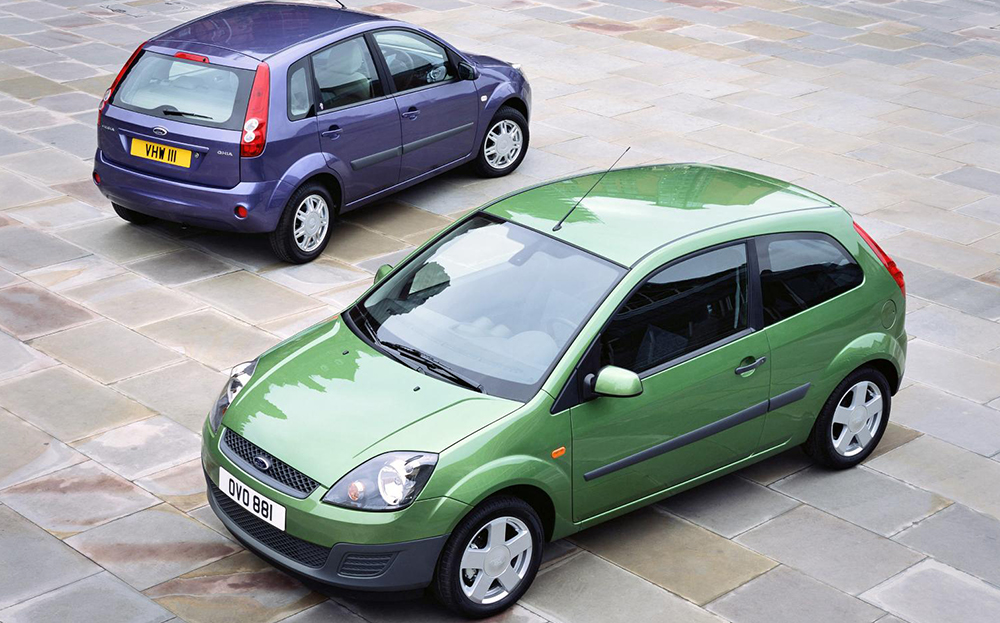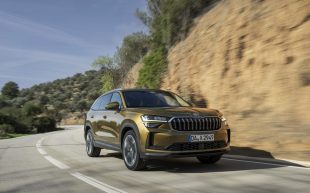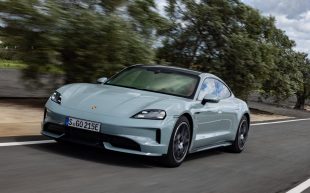Ford Fiesta Mk 5 review (2002-2008)
Bargain-basement motoring – and a decent drive, too
What is the Ford Fiesta Mk 5?
This model marked the moment that the long-running Fiesta supermini got its mojo back. It followed a series of dull, dreary and generally underwhelming iterations which had failed to perpetuate the spirit of the genre-defining Mk 1 (1977). Simple, tough and practical, the Fiesta Mk 5 hit the spot and the mass-market jackpot where others (Volkswagen Polo, Renault 5) just hadn’t quite made the grade.
It was the proverbial back-to-basics move. Its unfussy and uncluttered, yet modern mini-Focus styling, its plain but clearly laid out and user-friendly interior, and its line-up of lively but economical engines signalled that it meant business. And it even turned out to be rather good to fun to drive, as well.
As superminis go, the Fiesta has always been one of the best all-rounders, and while it may never have been one of the more fashionable choices (except, perhaps, in XR2 form) it’s one of the most underrated.
Search for and buy a used Ford Fiesta on driving.co.uk
It’s a suitably uncomplicated range from which to make a choice, without a multitude of marginally different variants or a bewildering array of trim lines. Of the engines, the Peugeot-Citroën diesels are strong yet economical, though the 1.6 TDCi gives little worthwhile gain over the sturdy, powerful 1.4 TDCi, at least for most everyday duties. However, it’s the better option should you be planning to do extensive motorway mileage. Drivers doing low to average annual mileages will be financially better off going for one of the cheaper petrol versions. The gutsy little 1.25 is a more than adequate daily runaround (avoid the ancient Endura 1.3).
Entry-level specifications (LX, Finesse, or Studio for later versions) are rather basic, some even without electric front windows let alone air conditioning, but the Climate Pack option, including Quickclear windscreen, proved popular. Many Zetec and Style models will have this fitted. All models from 2005 onwards have a higher level of equipment, though you’ll have to go for a Ghia for the full leather-trimmed mini-luxury experience.
Hot-hatch enthusiasts continue to rate the 150bhp ST. Many have been tweaked and tuned, mostly using the kosher Ford-sanctioned Mountune enhancements, not that warranty compliance is going to be an issue at this stage in a Mk 5’s life. The Zetec S is a good mid-point in terms of purchase price and running costs (especially for insurance purposes). It features a short-throw gearbox, tauter suspension and larger alloys for a suitably sporty effect.
The drive
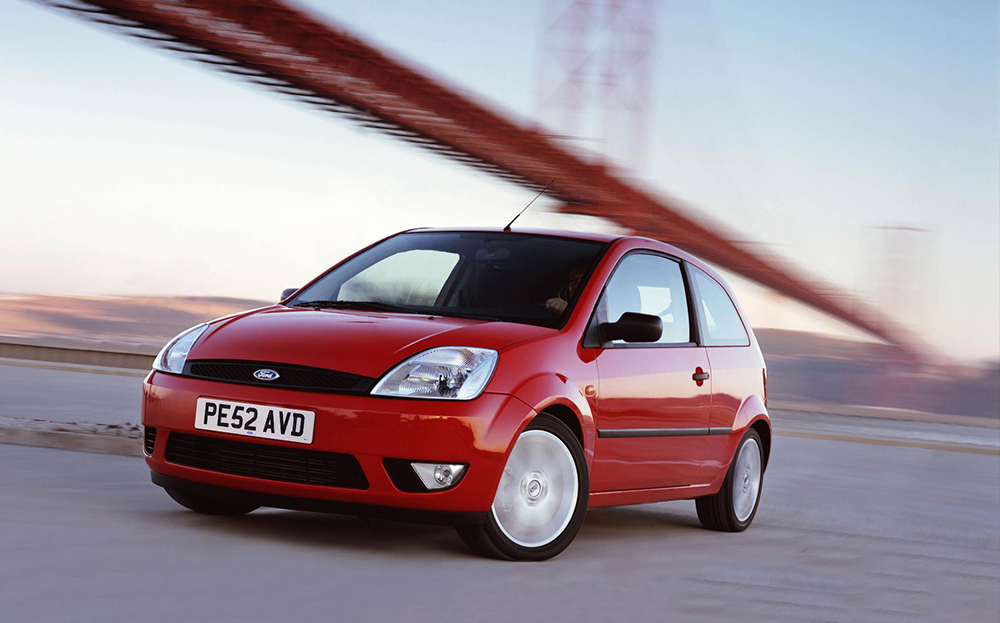
The Mk 5 has sufficiently responsive, well-weighted steering and supple suspension to make for an amusing and enjoyable drive, even in its more modest iterations. The flexibility of its engines, and its neat-changing five-speed manual gearbox, suggest that really, who needs anything fancier?
More to the point, for many Fiesta buyers, this model is a relatively stress-free drive around town thanks to its good visibility, easy-to-judge extremities, light clutch and steering, and compact dimensions. It’s easy to slot into a small parking space. The body is quite narrow by modern standards, too, so it’s good for nipping through small gaps in dense urban traffic. And a note for technophobes: it’s refreshingly free of irritating and confusing bleeping warnings, flashing lights, complicated menu systems or digital displays. Well, you can always buy a TomTom or Garmin should you want sat nav.
As in many Fords, the ride tends to be on the firm side, not helped by the aftermarket alloy wheels and ill-advised suspension modifications favoured by some previous owners. Even in standard trim, the sporty Zetec S will be too unforgiving for comfort-seekers. The Fiesta’s not the quietest and most refined car of its type, either, but it’s by no means hard to live with, or an endurance test on longer journeys.
The interior
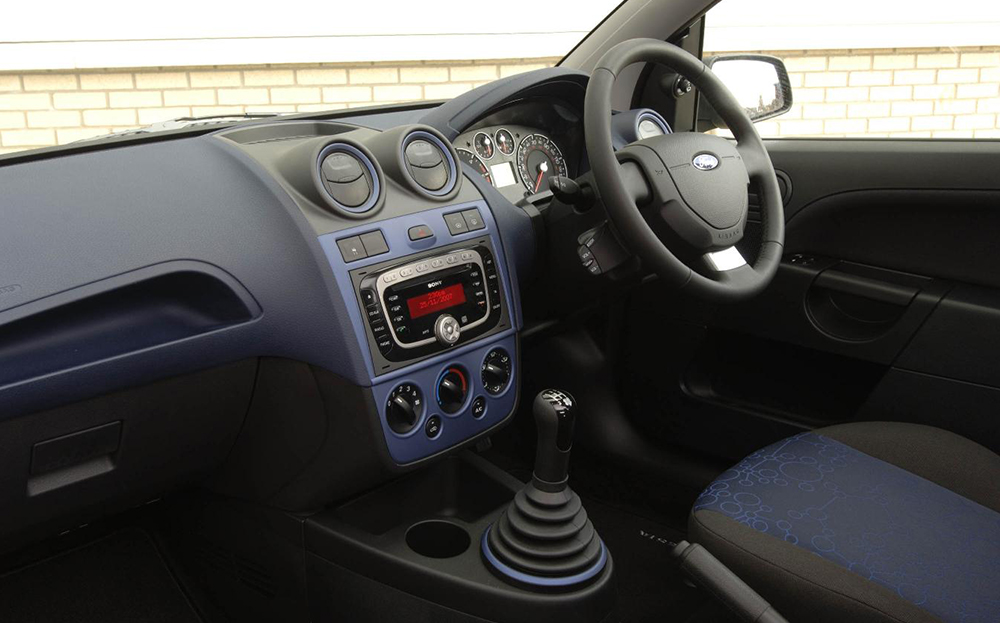
Often dull and dreary, and looking very dated in some of the earlier and more basic-spec models, the Fiesta’s cabin is just something you’re going to have to live with. Some of the themed special-edition models were tarted up a bit with colourful trim details and livelier upholstery patterns but by and large, the cabin design is the least inspiring thing about this car.
On the flip side, it will seat four reasonably sized adults – plus a fifth or a child at a squeeze – and has plenty of headroom, as well as a fairly generously sized boot. All but the most basic models have a split-folding rear seat and you can pack a good deal of luggage, garden rubbish or IKEA purchases in there. The seats themselves are well-shaped (sportier models have more prominent side-bolstering) and generally supportive. It’s not too difficult to climb into the rear seats in the three-door version, though if you regularly need to carry passengers or have children in car seats, you’ll be wanting the five-door model.
What to look out for when buying a used Ford Fiesta Mk 5
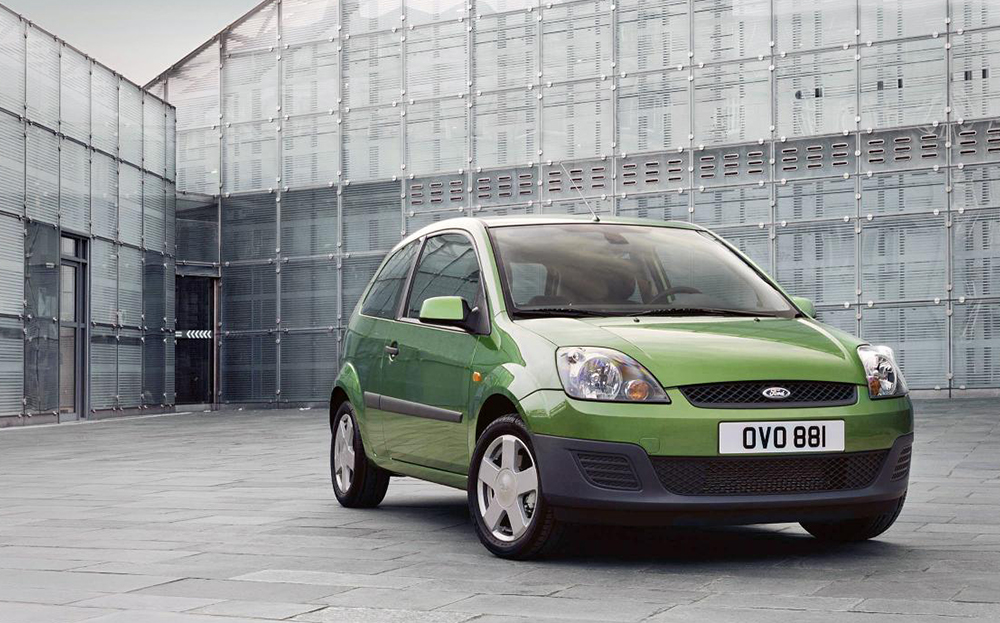
The Fiesta’s cheap parts and servicing prices, and affordable insurance costs have endeared it to young drivers, meaning that many used examples have seen the wrong side of a hedge, the bottom of a ditch or the inside of a body shop. Check the car’s history and its insurance category status carefully. Look out for hard-worked former driving school cars: the odd scuff and scrape to the paintwork is nothing to lose sleep over, but these cars will have taken a beating to the clutch, gearbox and braking system.
Otherwise, the Fiesta is generally a tough and reliable little thing. The Duratec petrol engines are durable, and the PSA diesels of this era are untroubled by particulate filter issues, though prone to oil leaks and, at higher mileages, turbo failures.
The main issues are going to be around general wear and tear – the suspension is a little susceptible – and failures in the electrical and electronic systems. Commonly reported non-mechanical problems include water leaks into the cabin. The optional Durashift automatic gearbox is quite complex, expensive to repair and temperamental, too; best stick with the manual unless you really need a two-pedal set-up.
This model of Fiesta has only been recalled a few times – good going for such a mass-market car – for issues including an airbag warning sensor, potential loss of power steering, a damaged steering column, a faulty weld on the rear axle on a handful of early examples, and a potential fuel leak in 1.6 TDCi diesels built from 2004-05. Check out the Vosa website for further details.
The one to buy
Fiesta 1.25 Zetec (Climate Pack)
Specifications
- Engine: 1242cc, 4-cylinder petrol
- Power: 74bhp @ 5200rpm
- Torque: 81lb ft @ 4000rpm
- Transmission: 5-speed manual
- Acceleration: 0-62mph in 13.6 sec
- Top speed: 101mph
- Fuel: 45.6mpg (combined)
- CO2: 142g/km
- Road tax band: F
- Dimensions: L 3918mm, W 1685mm, H 1468mm
Ford Fiesta rivals
- Peugeot 207 (check used car prices on driving.co.uk)
- Renault Clio (check used car prices on driving.co.uk)
- Vauxhall Corsa (check used car prices on driving.co.uk)
Search for and buy a used Ford Fiesta on driving.co.uk


